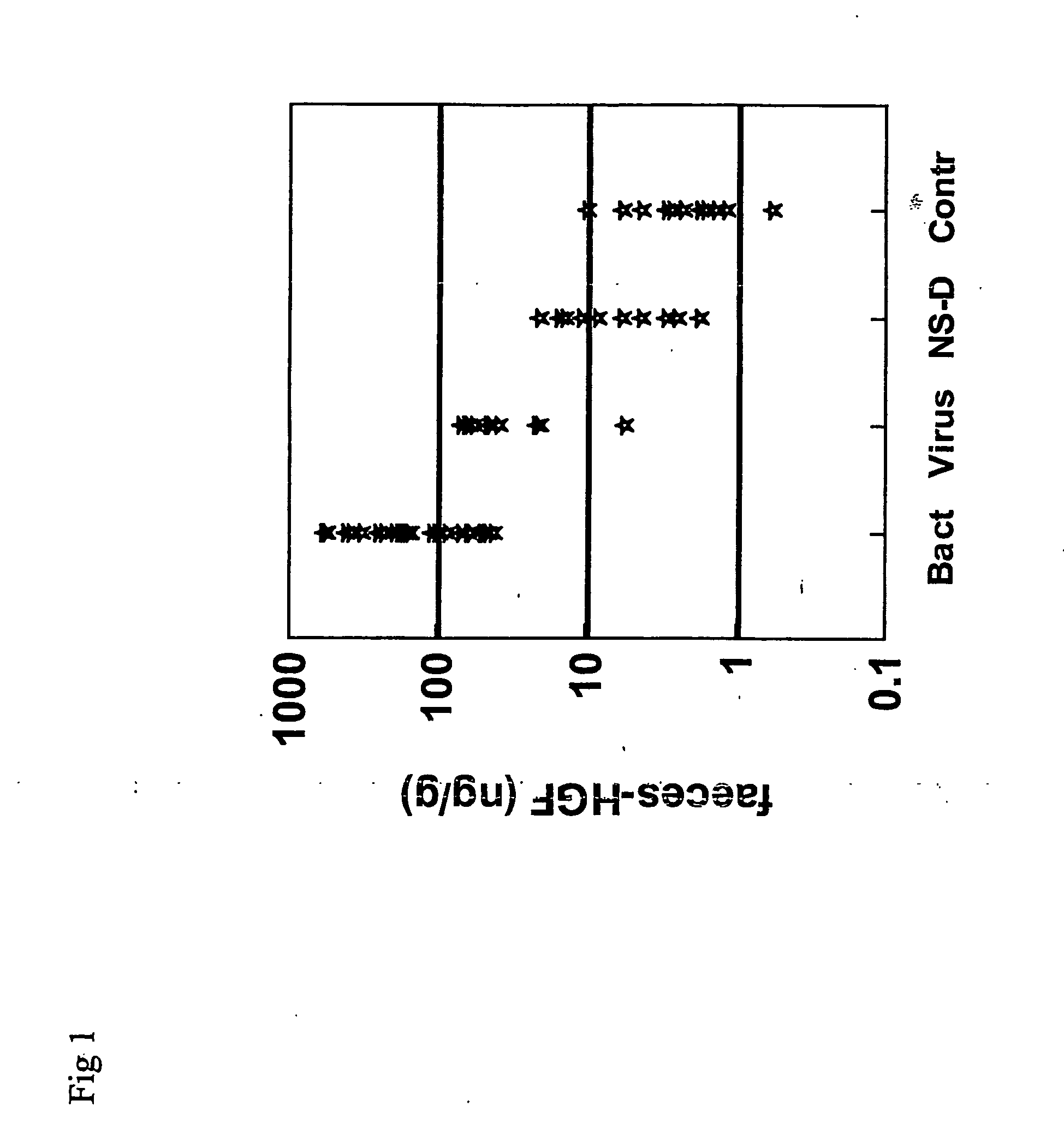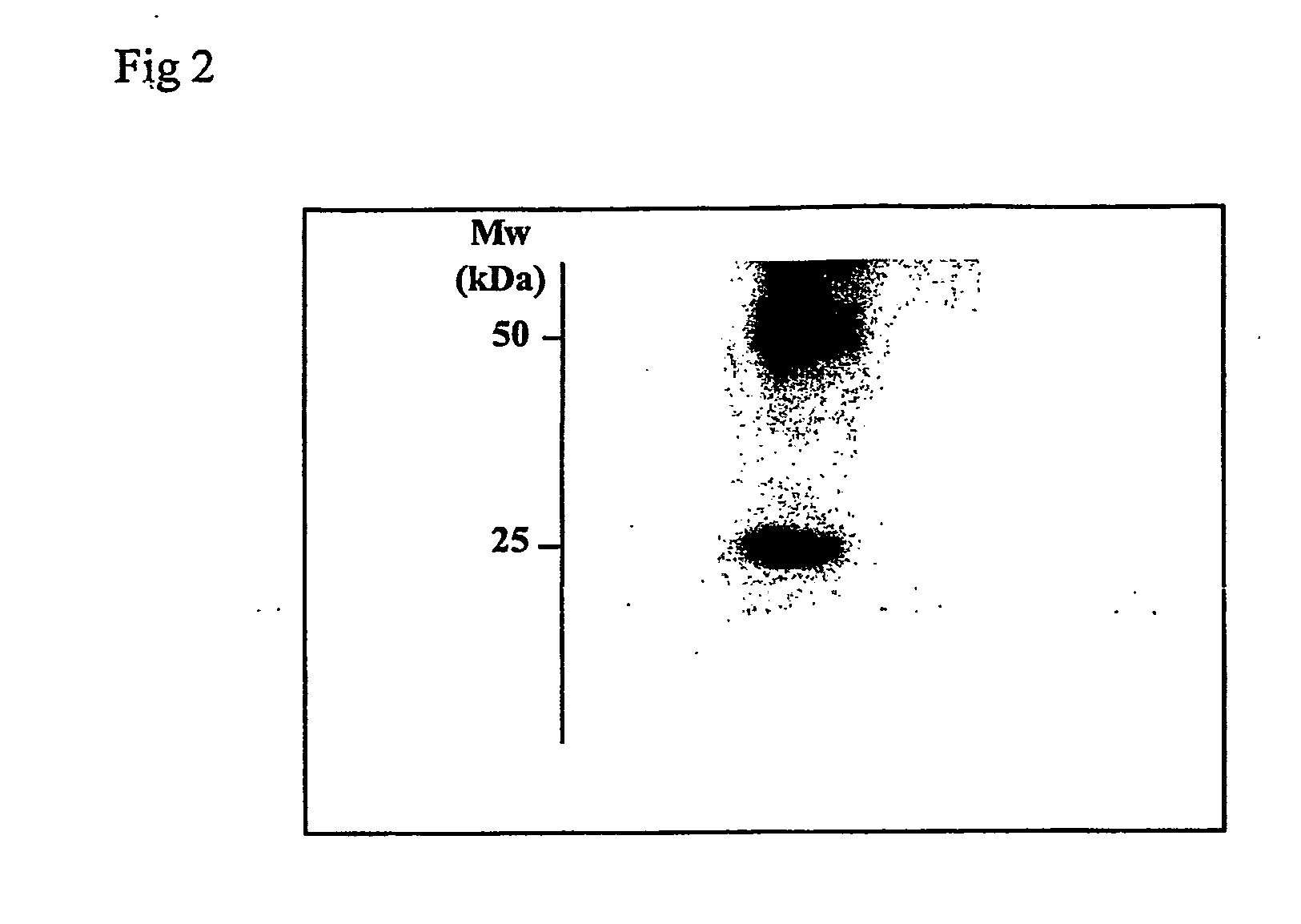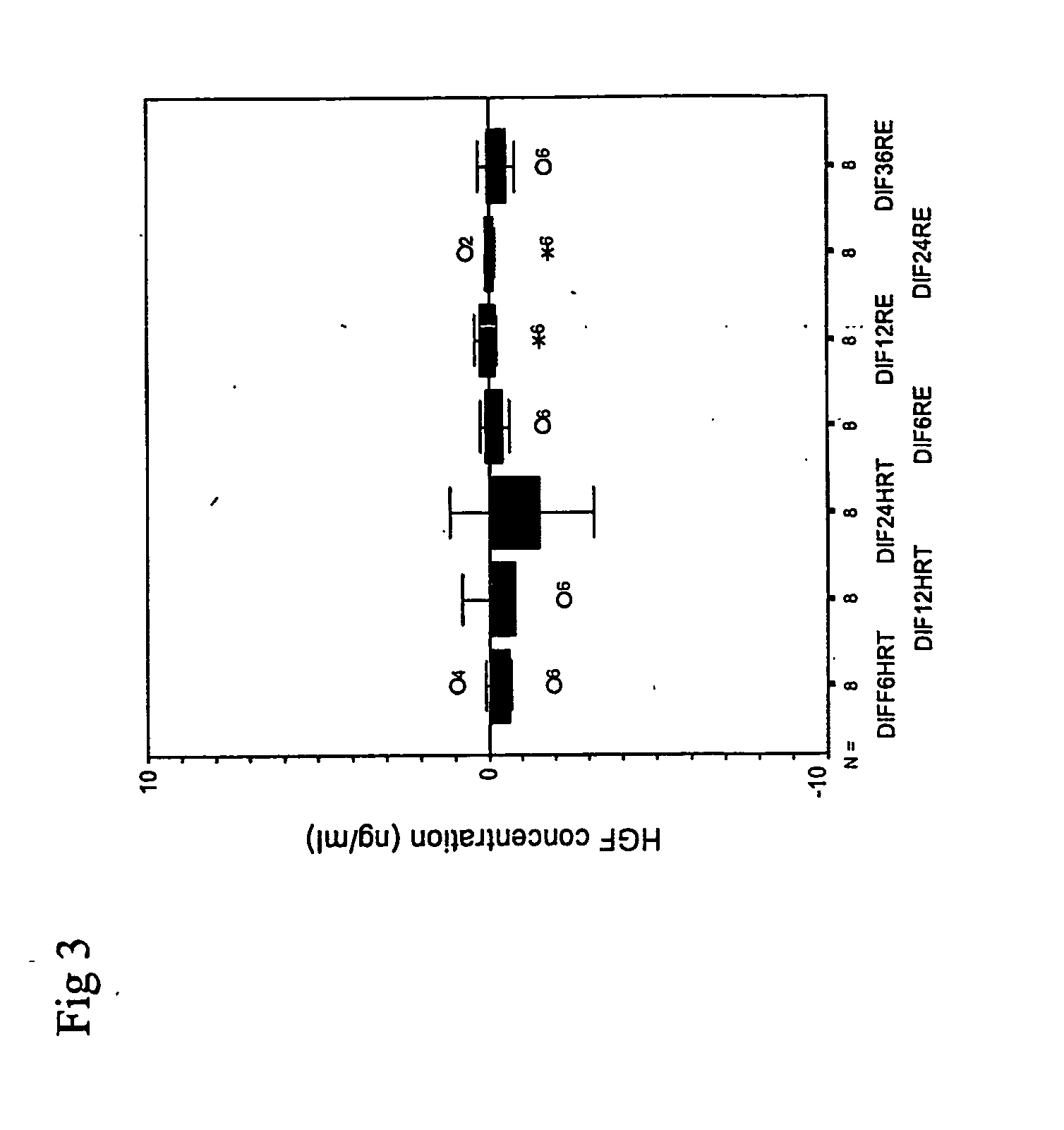Rapid Determination of Hepatocyte Growth Factor (Hgf) in the Body Fluids
a technology of hepatocyte growth factor and body fluid, which is applied in the direction of chemical methods analysis, material testing goods, instruments, etc., can solve problems such as showing potential indications of therapeutic failure, and achieve the effect of rapid determination and discrimination, and facilitate diagnosis and monitoring
- Summary
- Abstract
- Description
- Claims
- Application Information
AI Technical Summary
Benefits of technology
Problems solved by technology
Method used
Image
Examples
example 1
High Hepatocyte Growth Factor Levels in Feces During Acute Infections Gatroeliteritis
[0057]FIG. 1. Shows the individual levels of feces HGF in different groups: Bact=bacterial gastroenteritis, Virus=viral gastroenteritis, NS-D=non-infectious acute diarrhoea, Contr=healthy control group. Seventy patients admitted to the Department of Infectious Diseases because of acute non-treated gastroenteritis were included in a prospective study. Feces from 30 patients with culture verified gastroenteritis caused by Campylobacter jejuni, Clostridium difficile and Samonella, 10 patients with gastroenteritis caused by rotavirus, 1 patient with Blastocystis horninis, 8 patients with probable infectious gastroenteritis, 10 patients with non-infectious diarrhea and 11 healthy controls were analyzed for detection of HGF by ELISA. There were no significant differences in feces HGF concentrations in the patients with gastroenteritis caused by Clostridium difficile, Campylobacter jejuni or Salmonella. ...
example 2
The Stability of Fecal Hepatocyte Growth Factor Determination
[0059]FIG. 3. Relative differences in feces HGF levels compared to baseline (0=separation after 1 hour at room temperature). The included groups are as followed: Dif 6H RT, 12H RT, 24H RT: feces kept at room temperature 6, 12, 24 hours after separation. Non-significant differences were observed. Dif 6H RE, 12H RE, 24H RE and 36H RE: feces kept in the refrigerator (4-6° C.) 6, 12, 24 and 36 hours after separation. The differences were not significant. Eight feces samples from patients with diarrhea as well as eight feces samples from normal volunteers were diluted 1:6 in distilled water. The diluted samples were placed in eight tubes (Nunc Cryo Tube, Nunc Brand Products, Denmark). The first tube was immediately placed at −70° C. Second to fourth tubes were kept for 6, 12 and 24 hours respectively at room temperature prior to freeze storage. The fifth to eighth tubes were kept at 6, 12, 24 and 36 hours respectively at 4° C...
example 3
[0064] The Role of HGF in Restitution of Damaged Tissue in Chronic Leg Ulcers Night be Indicated by Up-Regulation of c-met Receptor
[0065]FIG. 5. Shows the expression of c-met HGF receptor in human skin biopsies from one healthy person (c) compared to a patient with chronic leg ulcer before (a) and after HGF treatment (b). Twelve patients (44-89 years old, 8 women) with chronic leg ulcers were included in the study. The patients had suffered from chronic leg ulcers, which had been stable for at least six months. The etiologies of the ulcers were venous insufficiency or a combined venous and a mild arterial insufficiency determined on clinical judgement, and by physiological measurements, i.e. toe and ankle pressure measurements. The patients with type 1 diabetes mellitus, serious arterial insufficiency, HIV and cancer disease or on medication with warfarin, heparin, low molecular heparin or immunosuppressive therapy, were excluded. Skin biopsies were taken and ulcer secrete was gath...
PUM
| Property | Measurement | Unit |
|---|---|---|
| temperature | aaaaa | aaaaa |
| pH | aaaaa | aaaaa |
| pH | aaaaa | aaaaa |
Abstract
Description
Claims
Application Information
 Login to View More
Login to View More - R&D Engineer
- R&D Manager
- IP Professional
- Industry Leading Data Capabilities
- Powerful AI technology
- Patent DNA Extraction
Browse by: Latest US Patents, China's latest patents, Technical Efficacy Thesaurus, Application Domain, Technology Topic, Popular Technical Reports.
© 2024 PatSnap. All rights reserved.Legal|Privacy policy|Modern Slavery Act Transparency Statement|Sitemap|About US| Contact US: help@patsnap.com










